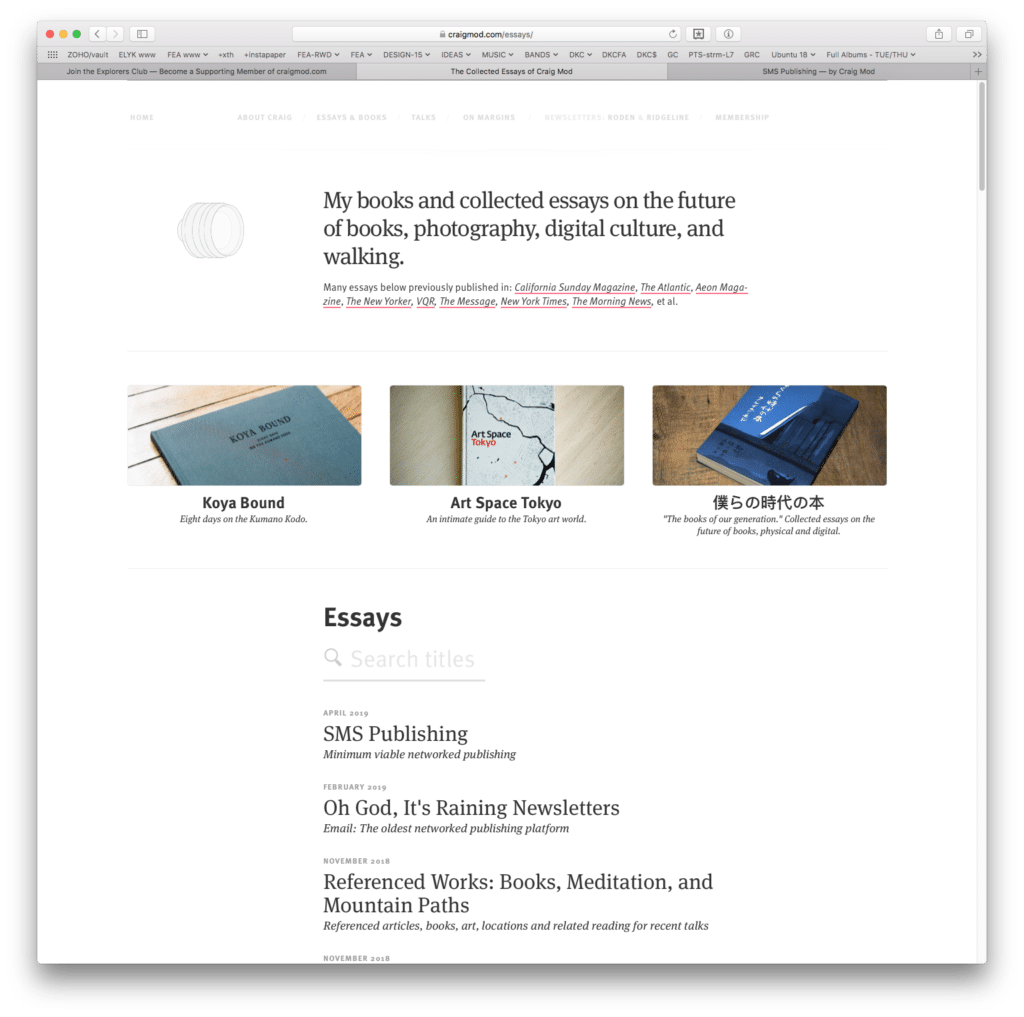Bob Moses, presente! I had the real honor to meet Moses in 1994 at the 30th anniversary of the Mississippi Freedom Summer.
Category: Memoir
Reading Craid Mod’s newsletter this morning was very interesting and makes me want to follow his work more closely. It also sent me down a bit of a rabbit hole on his site.
- I like that his archived posts just listing the month — just as useful, less granular
- thought of an idea to do an annual report via ongoing Flickr uploads — in lieu of Instagram, but as a way to document stuff throughout the year
- also the idea of a regular newsletter
- CM’s talks page made me think (again) about collecting my talks into one place.
- also really like the short and long of his about page

How to Write a Memoir (via Austin Kleon) is an interesting read for the history project(s) that I’ll someday start — maybe I should just follow Zinsser’s suggestion:
As for how to actually organize your memoir, my final advice is, again, think small. Tackle your life in easily manageable chunks. Don’t visualize the finished product, the grand edifice you have vowed to construct. That will only make you anxious.
Here’s what I suggest.
Go to your desk on Monday morning and write about some event that’s still vivid in your memory. What you write doesn’t have to be long—three pages, five pages—but it should have a beginning and an end. Put that episode in a folder and get on with your life. On Tuesday morning, do the same thing. Tuesday’s episode doesn’t have to be related to Monday’s episode. Take whatever memory comes calling; your subconscious mind, having been put to work, will start delivering your past.
Keep this up for two months, or three months, or six months. Don’t be impatient to start writing your “memoir,” the one you had in mind before you began. Then, one day, take all your entries out of their folder and spread them on the floor. (The floor is often a writer’s best friend.) Read them through and see what they tell you and what patterns emerge. They will tell you what your memoir is about and what it’s not about. They will tell you what’s primary and what’s secondary, what’s interesting and what’s not, what’s emotional, what’s important, what’s funny, what’s unusual, what’s worth pursing and expanding. You’ll begin to glimpse your story’s narrative shape and the road you want to take.
Then all you have to do is put the pieces together.